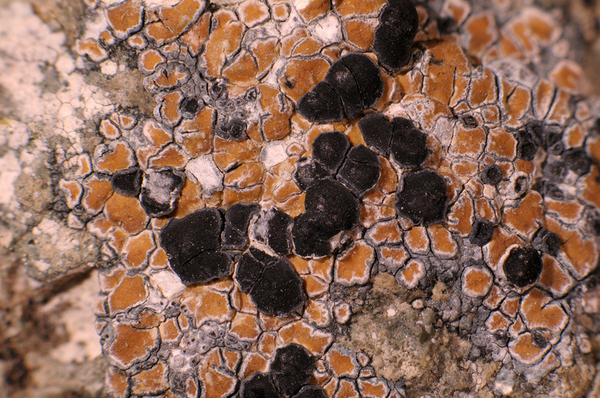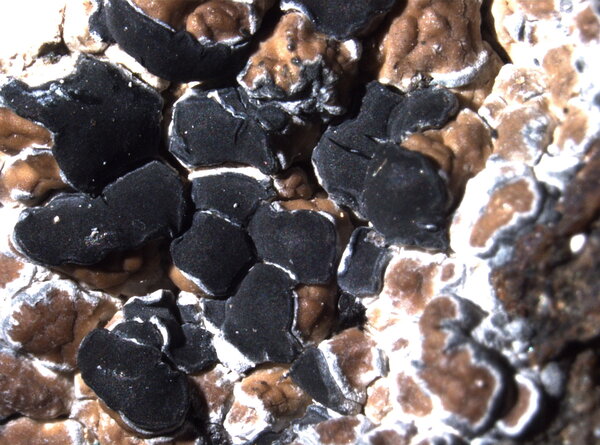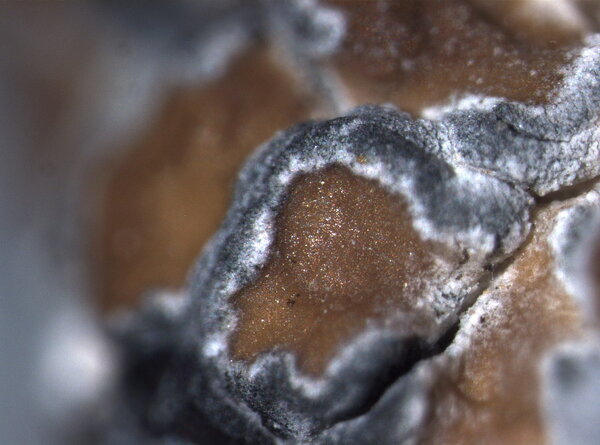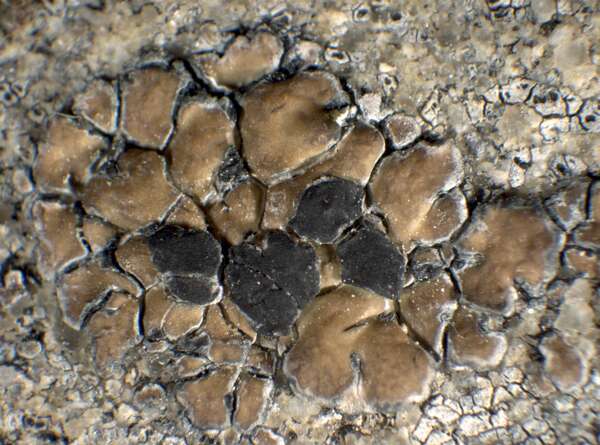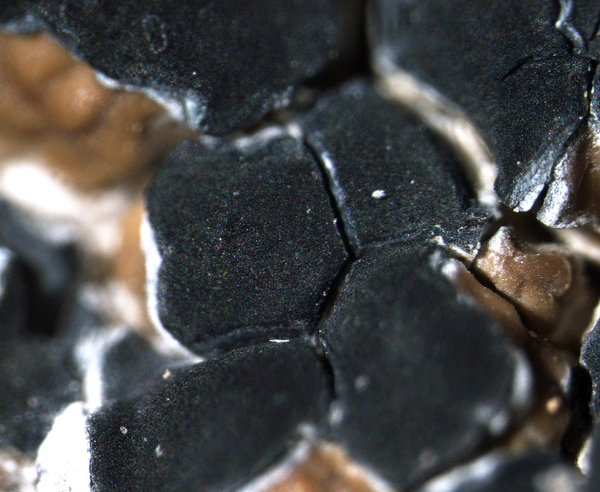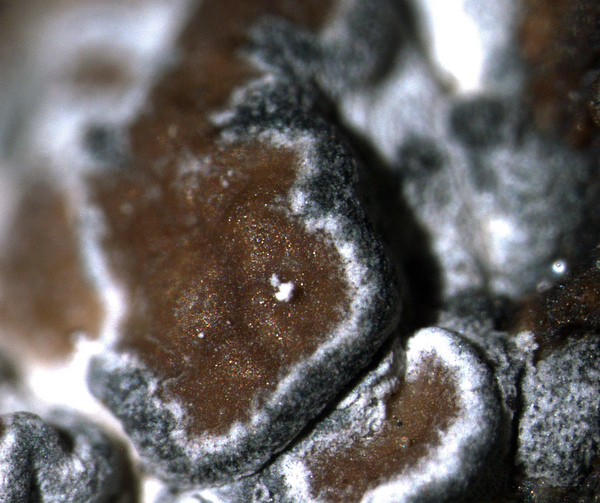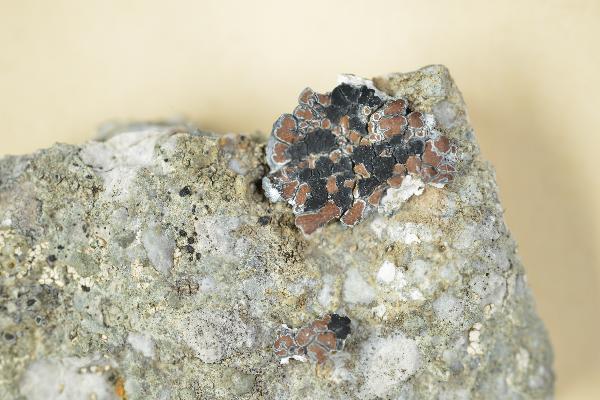Lecidea leprosolimbata (Arnold) Poelt
Lettau ex Poelt, Mitt. Bot. Staatss. München, 3: 587, 1960. Basionym: Psora atrobrunnea var. leprosolimbata Arnold - Verh. zool.-bot. Ges. Wien, 39: 264, 1889.
Synonyms: Lecidea atrobrunnea f. leprosolimbata (Arnold) Lettau
Distribution: N - TAA (Hertel & Schuhwerk 2010, Nascimbene & al. 2022), Piem (TSB 34401), VA.
Description: Thallus crustose, episubstratic, 0.5-2 mm thick, areolate to subsquamulose, of flat to strongly convex, up to 3 mm wide, yellow-brown, copper-brown or dark reddish brown areoles with a whitish to grey edge (due to the production of thallospores), starting the life-cycle on the thalli of Bellemerea subcandida; prothallususually conspicuous, dark, rarely absent. Algal layer strongly discontinuous; medulla white, I+ intensely blue-violet, Apothecia lecideine, black, 0.5-1.5(-2) mm across, often clustered, slightly constricted base, with a flat to convex, rarely bluish-pruinose disc, and a persistent, raised, often slightly wavy proper margin. Proper exciple of parallel-radiating, 3-7 µm thick hyphae, blue- to green-black in outer part, colourless or very pale brown within; epithecium bright green, bluish-green, or olive-green; hymenium colourless to very pale greenish in upper part, 40-65 µm high, I+ blue; paraphyses coherent, usually simple, rarely anastomosing, 1.5-2.5 µm thick at mid-level, the apical cells clavate, 3-5 µm wide; hypothecium colourless to pale brown, I+ blue. Asci 8-spored, narrowly clavate, thick-walled, with a K/I+ pale blue tholus and a strongly amyloid, thin apical cushion, surrounded by a I+ blue outer layer, Lecidea-type. Ascospores 1-celled, hyaline, ellipsoid-oblong, with rounded ends, 5-13 x 3-7 µm. Pycnidia black, immersed with a usually irregular to graphidoid ostiolar region. Conidia bacilliform. Photobiont chlorococcoid. Spot tests K+ yellow turning red (needle-like crystals), C-, KC-, P+ yellow-orange. Chemistry: norstictic acid syndrome.Note: on sunny, inclined surfaces of hard, weakly calciferous siliceous rocks in upland areas; certainly more widespread in the Alps, and locally even common. The world distribution was mapped by Hertel (2006). See also note on L. rapax.
Growth form: Crustose
Substrata: rocks
Photobiont: green algae other than Trentepohlia
Reproductive strategy: mainly asexual, by conidia and thalloconidia
Subcontinental: restricted to areas with a dry-subcontinental climate (e.g. dry Alpine valleys, parts of Mediterranean Italy)
paras Bellemerea subcandida
Commonnes-rarity: (info)
Alpine belt: rare
Subalpine belt: rather rare
Oromediterranean belt: absent
Montane belt: very rare
Submediterranean belt: absent
Padanian area: absent
Humid submediterranean belt: absent
Humid mediterranean belt: absent
Dry mediterranean belt: absent
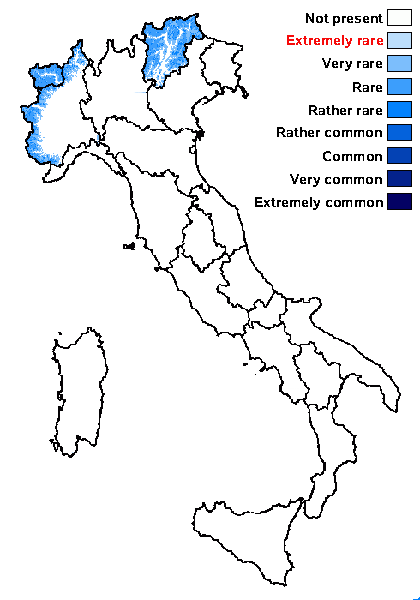
Predictive model
Herbarium samples
Growth form: Crustose
Substrata: rocks
Photobiont: green algae other than Trentepohlia
Reproductive strategy: mainly asexual, by conidia and thalloconidia
Subcontinental: restricted to areas with a dry-subcontinental climate (e.g. dry Alpine valleys, parts of Mediterranean Italy)
paras Bellemerea subcandida
Commonnes-rarity: (info)
Alpine belt: rare
Subalpine belt: rather rare
Oromediterranean belt: absent
Montane belt: very rare
Submediterranean belt: absent
Padanian area: absent
Humid submediterranean belt: absent
Humid mediterranean belt: absent
Dry mediterranean belt: absent

Predictive model
| Herbarium samples |
 INDEX FUNGORUM
INDEX FUNGORUM
 GBIF
GBIF
 DOLICHENS
DOLICHENS


